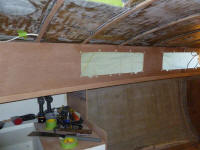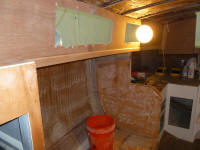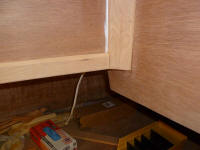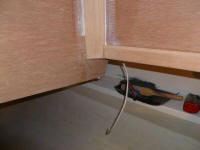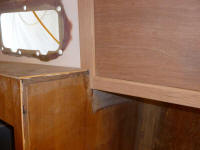
110 Cookson Lane | Whitefield, ME 04353 | 207-232-7600 | tim@lackeysailing.com
In the cabin, I removed clamps and braces on the starboard cabin side trim. Afterwards, I trimmed away the excess from the corner trims, cutting them even with the new side trim as needed.
I returned to work in the galley, as the new icebox liner was complete and I'd have it on hand soon, and as soon as that was installed I could continue final construction work on the area. To prepare ahead, I finalized the layout of the galley fixtures: stove, sink, and drop-in refrigerator. Using accurate templates of the items, I marked their locations on the counter according to an earlier layout plan, with minor adjustments as needed.
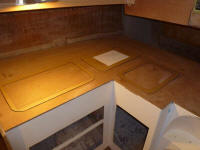
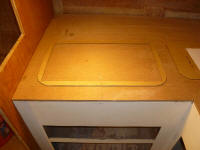
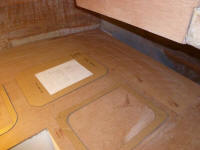
The refrigerator design left little room for margin in its opening, as the flange that was to rest against the counter was no more than 1/8" all around except for four corner flanges where the unit would be through-fastened. With such minimal room for error, I decided to build a plywood template of the cutout, not only to test the fit but also to ensure that the final cut was spot-on. The small clearances made this a frustrating task, as essentially the template needed to scrape by the refrigerator body without any spare clearance, not allow any of the opening to show afterwards, and leave enough material at the corners for the fixing screws--but several protruding fasteners on the fridge body required that the opening be larger to accommodate their heads. Good stuff.
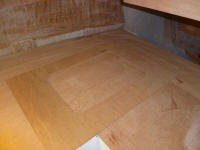
Complicating this issue was the location of the unit in the boat. In order to be able to install (or remove) the drop-in unit in situ, I needed 18" overhead clearance above the countertop. The chosen location (indeed, just about any location) offered this space over only part of the opening: the overhanging bridgedeck reduced clearance at the after end of the location by a few inches, so I had to ensure that I'd be able to angle the unit in beneath the lower after section, before straightening it out and lowering the rest of the way. The plywood template would come in handy here as well, as I could actually test-fit the unit in the relative convenience of the shop.
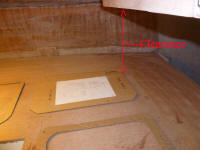
I removed the compressor from the base of the refrigerator, as designed; this could be located up to several feet away, and this was required here since the attached compressor made the unit too deep for the space available. With the compressor removed and the copper line carefully unwound, I tested the unit's fit through the template opening, which I spanned across a space between two benches. The good news was that angling the unit in would provide enough overhead clearance; in practice, I was sure that installing the refer would be challenging through its impractically tight access hole. A marginally wider flange overhang would be nice, product designers. I didn't want to test the installation in the boat, as I wanted to handle the compressor and its just-waiting-to-be-kinked refrigerant line any more than needed, so with the theoretical test leading the way, I just hoped that final installation would go acceptably later.
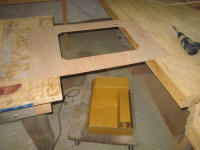
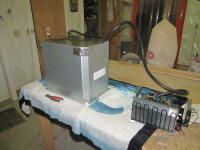
Satisfied as much as I could be that the template provided the shape and size needed for the opening, I used it to mark out the opening on the countertop. This led to a final complication: a transverse support bulkhead beneath the countertop was just barely in the way. I couldn't move the refer any further aft, as I didn't want to compromise the installation further, so I decided to cut out a portion of the bulkhead, leaving one of the countertop support cleats in place, as well as most of the bulkhead, but taking out the rectangular section that would be at the aft end of the refrigerator opening and in the way of its installation.
With all the holes cut, I test-fit the stove and sink, but relied only on the refer template to test the opening; I only wanted to force the fridge into its opening once.
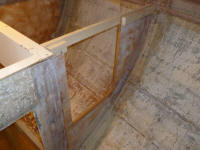
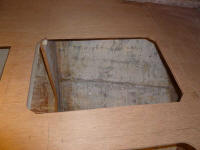
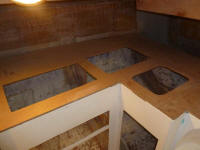


After several delays, the replacement mast for the boat finally arrived from Delaware, and I was pleased with its condition--much better overall than the original spar (on which I'd found even more--though repairable--issues since discovering the corroded hole earlier). For the moment, I set the spar aside out of the way, but would move it to another location away from the brush and trees soon.
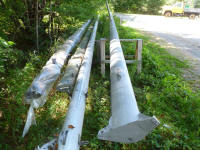
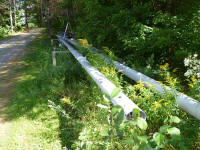
Also arriving at the shop on this day was the new cherry beadboard for the main cabin, custom-milled at a local shop, along with a quantity of poplar with the same profile, which we'd be using for part of the overhead in the main cabin.
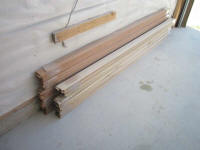
The owner selected LED lighting from Bebi Electronics in Fiji, and a sample, painted version of the selected lights arrived by registered mail for inspection. As a prototype, the finish wasn't quite up to final standards, but otherwise the hockey-puck light looked good, and we expected to order a quantity for use in the overheads throughout the boat, punctuated by several LED brass berth lamps from Alpenglow.
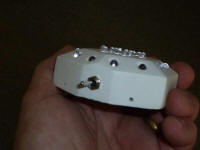
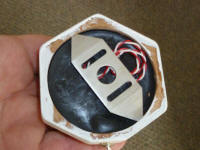
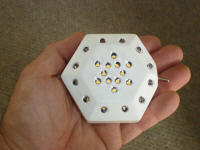
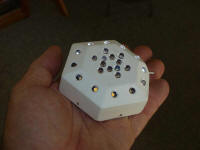
Total Time on This Job Today: 8.25 hours
